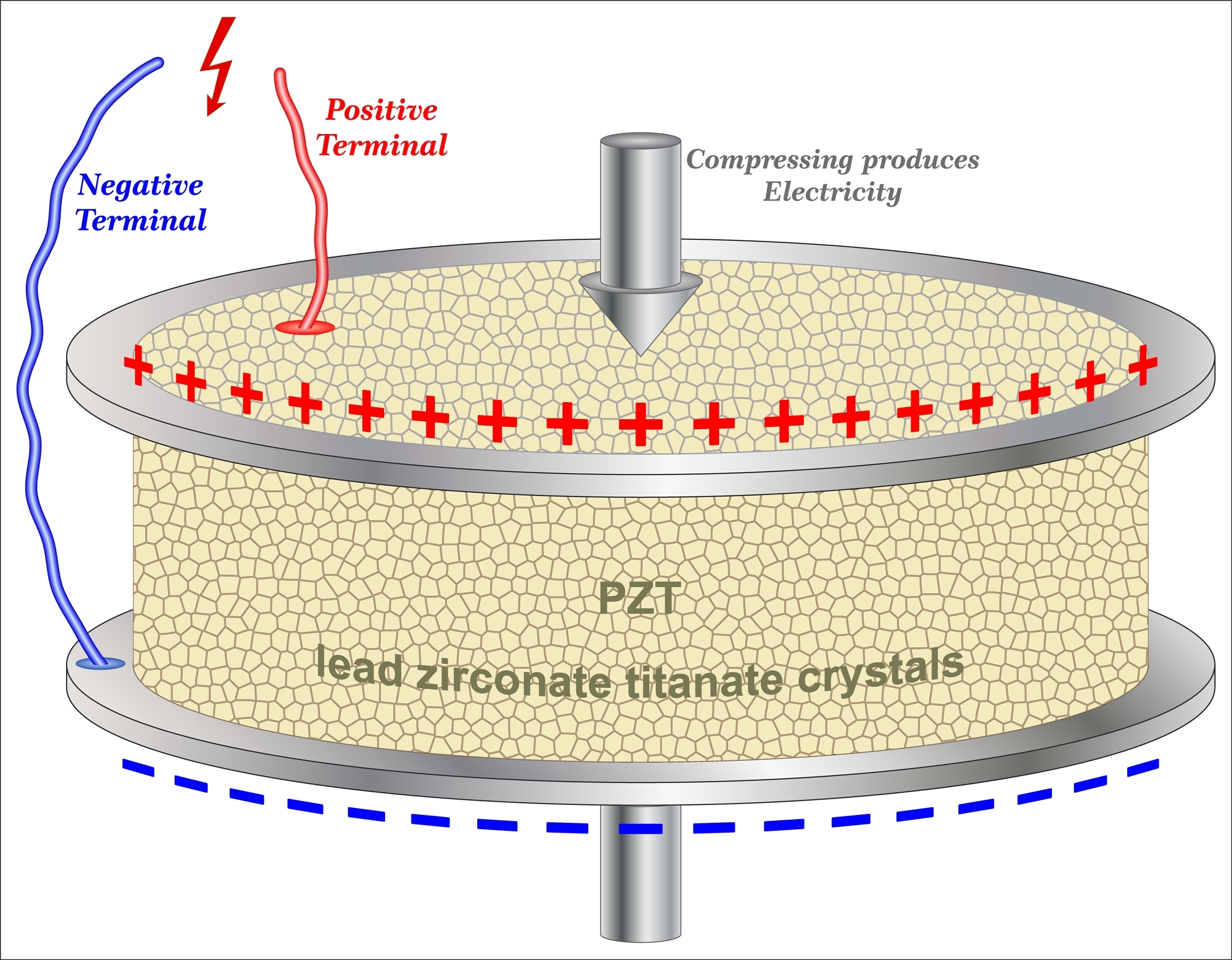Piezoelectric crystals have recently been identified as being the cause of a natural phenomenon that has shaped the rise and fall of civilizations. There are also frequent efforts to find socially useful applications for it, although many of these have ended up as curiosities. So, what is piezoelectricity, and why do crystals that have it behave in their own unique way?
What Is Piezoelectricity?
Certain substances, when placed under physical stress, develop imbalances of charges. Electrons accumulate in certain parts, creating a negative electric potential; while other areas are depleted in electrons, and so form a positive potential.
Quartz, the most common material to display piezoelectricity, is so abundant that it’s likely many people have noticed that when squeezed it can become able to attract charged objects. Of course, quartz is not easy to squeeze, which may be why there is no record of these observations before Pierre Curie and his brother Jacques published research on it in 1880.
The Curies showed that certain crystals become electrically polarized when stressed, and the field strength is proportional to the force applied. The name comes from the ancient Greek word piézō, “to squeeze”. For Jacques, this was the highlight of his scientific career, whereas Pierre went on to be far more famous for many other things.

Image Credit: Fouad A. Saad/Shutterstock.com
At a time when our understanding of electricity was in its infancy, and only a few practical applications had been developed, the discovery helped build excitement in the general phenomenon but was initially just a curiosity itself.
When an electric field is applied to a piezoelectric material, it will deform, a phenomenon known as the converse piezoelectric effect. The change is usually tiny – perhaps one part in a thousand – but that’s enough for some practical applications.
Why Are A Few Things Piezoelectric But Most Aren’t?
Piezoelectricity was initially observed in crystals. The Curies tried squeezing all sorts of crystalline materials to see which ones proved piezoelectric and to find the strongest effect. Along with Rochelle salt, a form of tartaric acid and quartz were their star examples.
Despite the limited knowledge available at the time about the way atoms lined up in crystals, the brothers were able to deduce that the common feature of the piezoelectric crystals related to their axes of symmetry. Piezoelectric behavior requires a crystal to have a polar bond, where some atoms hold onto their electrons more tightly than others. They also must lack inversion symmetry, that is they are not the same when components are placed on the opposites side of a center of symmetry,
Although more classes of crystal are piezoelectric than not, those that show strong piezoelectric effects are rare in nature, quartz is the only one that is common.
In piezoelectric crystals, the pressure causes electric dipoles to line up, rather than be arranged randomly, so that their cumulative effect produces a field.
We have since learned that piezoelectricity is not confined to crystals. Ferroelectric ceramics (those that electrically polarize in ways that resist reversal from external fields) with randomly orientated grains can be piezoelectric. That includes the class of materials known as perovskites that probably represent the future of solar energy.
Some polymers also show weak piezoelectric behavior because electric charges build up around voids within the material, and become concentrated when the voids are deformed. The big surprise in this area came by chance when piezoelectric liquids were discovered, shocking researchers both literally and intellectually.
Why Does Piezoelectricity Matter?
Piezoelectricity has found many applications. In most substances, the piezoelectric effect is so weak that it is too difficult to harness to bother. There are exceptions, however – suitable pressure on quartz crystals can produce electrical potential differences of thousands of volts, without the need to carry around an impractically large device.
The surge of electricity generated by sudden pressure on a quartz crystal can produce sparks that jump a gap, and is the basis of cigarette lighters and ignition devices for gas heaters and stoves.
On the other hand, by varying the electric fields around piezoelectric crystals, the converse effect can make metal plates glued to the crystals vibrate very rapidly. When performed thousands of times a second these vibrations were used to produce the first sonar, which mapped the ocean floor and detected submarines. A similar approach made it possible to produce lighter radio transmitters, allowing planes to communicate with each other while in flight during World War II
A recent paper reveals that quartz’s piezoelectric properties may be why gold settles in quartz veins and forms concentrated nuggets. The economic effects of these nuggets – and the way their presence has made empires rise and fall – mean that, if this is true, natural piezoelectricity may have shaped our history more than any application humans designed.
There are probably even more important piezoelectric effects, but we don’t yet fully understand them. Many body parts, such as bones, are piezoelectric, and it is thought they use this to grow. It may be why bones atrophy in orbit, for example; the stresses created in Earth gravity keep them regenerating through piezoelectricity.
Piezoelectricity has fascinated enough scientists that some see potential for more world-changing applications. For example, ideas to underlay roads with piezoelectric materials and produce large amounts of power from cars driving over the top, or electricity-producing shoes draw publicity now and then. However, these reports usually fail to consider the inefficiency of the approach, even before one gets to the enormous cost. More modest versions serve as marketing devices, such as nightclubs that power the lights from people dancing on a piezoelectric floor.
All “explainer” articles are confirmed by fact checkers to be correct at time of publishing. Text, images, and links may be edited, removed, or added to at a later date to keep information current.
Source Link: What Are Piezoelectric Crystals And How Do They Work?